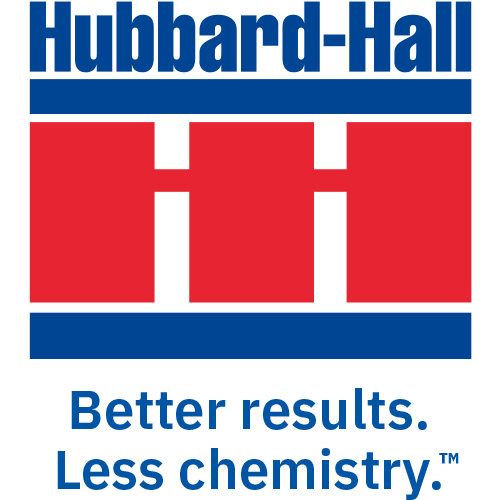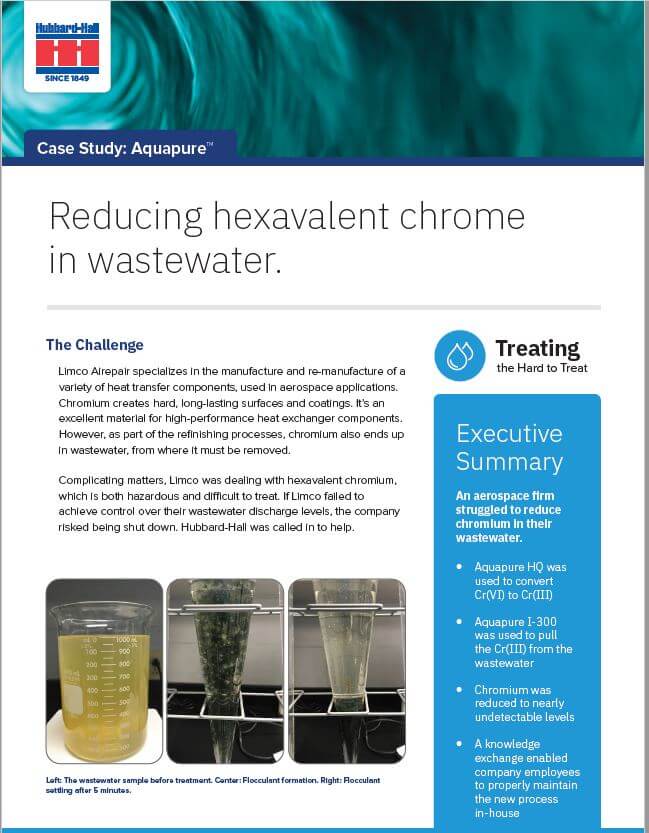Executive Summary
An aerospace firm struggled to reduce chromium in their wastewater.
• Aquapure HQ was used to convert Cr(VI) to Cr(III)
• Aquapure I-300 was used to pull the Cr(III) from the wastewater
• Chromium was reduced to nearly undetectable levels
• A knowledge exchange enabled company employee to properly maintain the new process in-house
“We were able to not only reduce chromium to acceptable levels, we were also able to pass on treatment knowledge to the company, enabling them to do business a little better.”
~Robin Deal
AquaPure Product Manager
The Challenge
Limco Airepair specializes in the manufacture and re-manufacture of a variety of heat transfer components, used in aerospace applications. Chromium creates hard, long-lasting surfaces and coatings. It’s an excellent material for high-performance heat exchanger components. However, as part of the refinishing processes, chromium also ends up in wastewater, from where it must be removed.
Complicating matters, Limco was dealing with hexavalent chromium, which is both hazardous and difficult to treat. If Limco failed to achieve control over their wastewater discharge levels, the company risked being shut down. Hubbard-Hall was called in to help.
The Approach
Hexavalent chromium (Cr(VI)) is not easily treated, unless you really understand the chemistry. Fortunately, Robin Deal, Hubbard-Hall Wastewater Specialist, both understood the chemistry and was familiar with the manufacturing processes Limco was using.
Robin began her process with a full treatability study that demonstrated to Limco management that their problems were solvable.
Next, a two-pronged approach was recommended:
Step one: Use Hubbard-Hall’s Aquapure HQ, a reducing agent that would turn Cr(VI) into more easily treated Cr(III).
Step two: Use Aquapure I-300, a ferrous coagulant matched with an anionic polymer flocculant and designed pull the chromium out of the wastewater.
Hubbard-Hall then taught the Limco technicians how to properly perform the necessary steps and test for hexavalent chrome in the effluent to help them ensure released wastewater met compliance requirements.
The Outcome
Through Hubbard-Hall’s recommended approach, the company was able to not only bring their wastewater into compliance but also to lower the chromium level to an undetectable level. With control over their wastewater in place, Limco was freed up to investigate upgrades to and automation of their wastewater treatment system.







